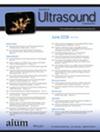Ultrasound Radio Frequency Time Series for Tissue Typing
Abstract
Objectives
One of the most promising auxiliaries for screening breast cancer (BC) is ultrasound (US) radio-frequency (RF) time series. It has the superiority of not requiring any supplementary equipment over other methods. This article sought to propound a machine learning (ML) method for the automated categorization of breast lesions—categorized as benign, probably benign, suspicious, or malignant—using features extracted from the accumulated US RF time series.
Methods
In this research, 220 data points of the categories as mentioned earlier, recorded from 118 patients, were analyzed. The RFTSBU dataset was registered by a SuperSonic Imagine Aixplorer® medical/research system fitted with a linear transducer. The expert radiologist manually selected regions of interest (ROIs) in B-mode images before extracting 283 features from each ROI in the ML approach, utilizing textural features such as Gabor filter (GF), gray-level co-occurrence matrix (GLCM), gray-level run-length matrix (GLRLM), gray-level size zone matrix (GLSZM), and gray-level dependence matrix (GLDM). Subsequently, the particle swarm optimization (PSO) narrowed the features to 131 highly effective ones. Ultimately, the features underwent classification using an innovative multi-origin method classification (MOMC), marking a significant leap in BC diagnosis.
Results
Employing 5-fold cross-validation, the study achieved notable accuracy rates of 98.57 ± 1.09%, 91.53 ± 0.89%, and 83.71 ± 1.30% for 2-, 3-, and 4-class classifications, respectively, using MOMC-SVM and MOMC-ensemble classifiers.
Conclusions
This research introduces an innovative ML-based approach to differentiate between diverse breast lesion types using in vivo US RF time series data. The findings underscore its efficacy in enhancing classification accuracy, promising significant strides in computer-aided diagnosis (CAD) for BC screening.


 求助内容:
求助内容: 应助结果提醒方式:
应助结果提醒方式:


